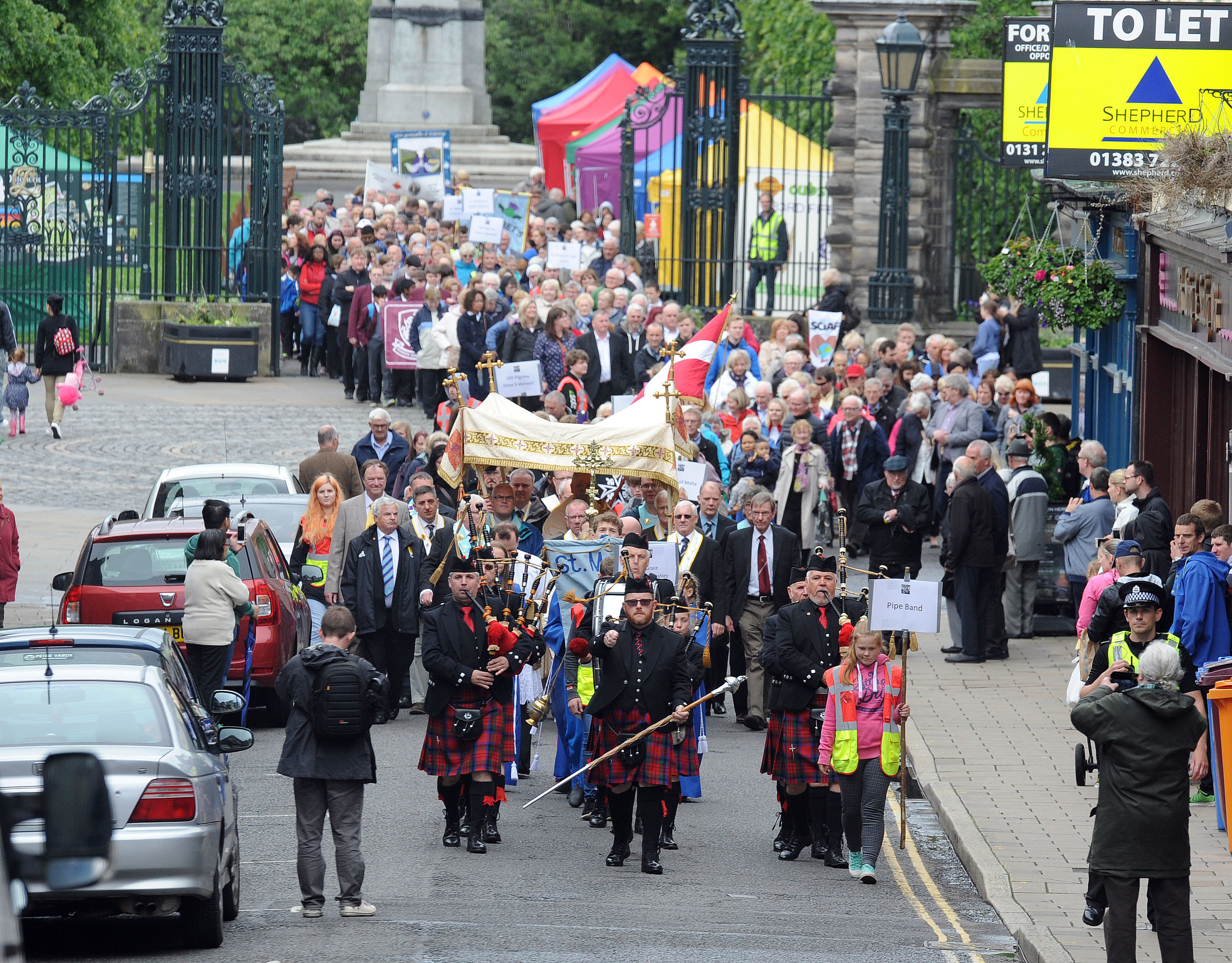Hundreds of worshippers descended on Dunfermline on Sunday as part of a national pilgrimage in honour of St Margaret of Scotland.
The summer pilgrimage dates back to the 13th Century but was only revived in 2015 following a 41-year absence.
Since then though the event has been growing in stature and more than 2,000 people are thought to have travelled from far and wide to visit the Fife town for the 2017 pilgrimage.
St Margaret became Queen of Scots in 1070 and was not only renowned for her good influence on her husband King Malcolm III but also for her devout Christian piety and her charitable works towards the sick and poor, while raising eight children of her own.
She was declared Patroness of Scotland in 1673 and is also the Patron Saint of Mothers, making her one of the most significant female figures in Scottish history.
The roots of the summer pilgrimage date back to June 1250 when the relics of St Margaret were translated to a new shrine in Dunfermline Abbey following her canonisation that year by Pope Innocent IV.
An annual summer pilgrimage to Dunfermline soon emerged and continued until the late 16th century. It was then revived in 1899 and continued again until 1974.
Pilgrims arriving in Dunfermline on Sunday morning were encouraged to spend time exploring the many historic places associated with St Margaret before gathering in the afternoon for a procession of her relics through the town’s streets.
The procession led by Archbishop Leo Cushley of St Andrews and Edinburgh left Pittencrieff Park and travelled up Bridge Street, High Street and East Port to St Margaret’s Memorial Church.
There the Mass was concelebrated by Archibishop Cushley and other local clergy, with the service also being streamed live on YouTube.
Such is the interest generated by the pilgrimage, once the church was full pilgrims were directed to the church crypt and Carnegie Hall across the road – where priests were in attendance to distribute Holy Communion.
The Courier revealed last week how organisers of the pilgrimage have approached Dunfermline Athletic Football Club as they plan for future events which they believe will be even bigger.
That would help bring the town back to the heyday of the pilgrimage in 1930, when the club accommodated an incredible 20,000 people for Mass on the pitch after a colourful procession through the town.
“As the event grows, we’re looking at the possibility of re-establishing it at a bigger venue,” Father Chris Heenan, parish priest at St Margaret’s Memorial Church, concluded.
